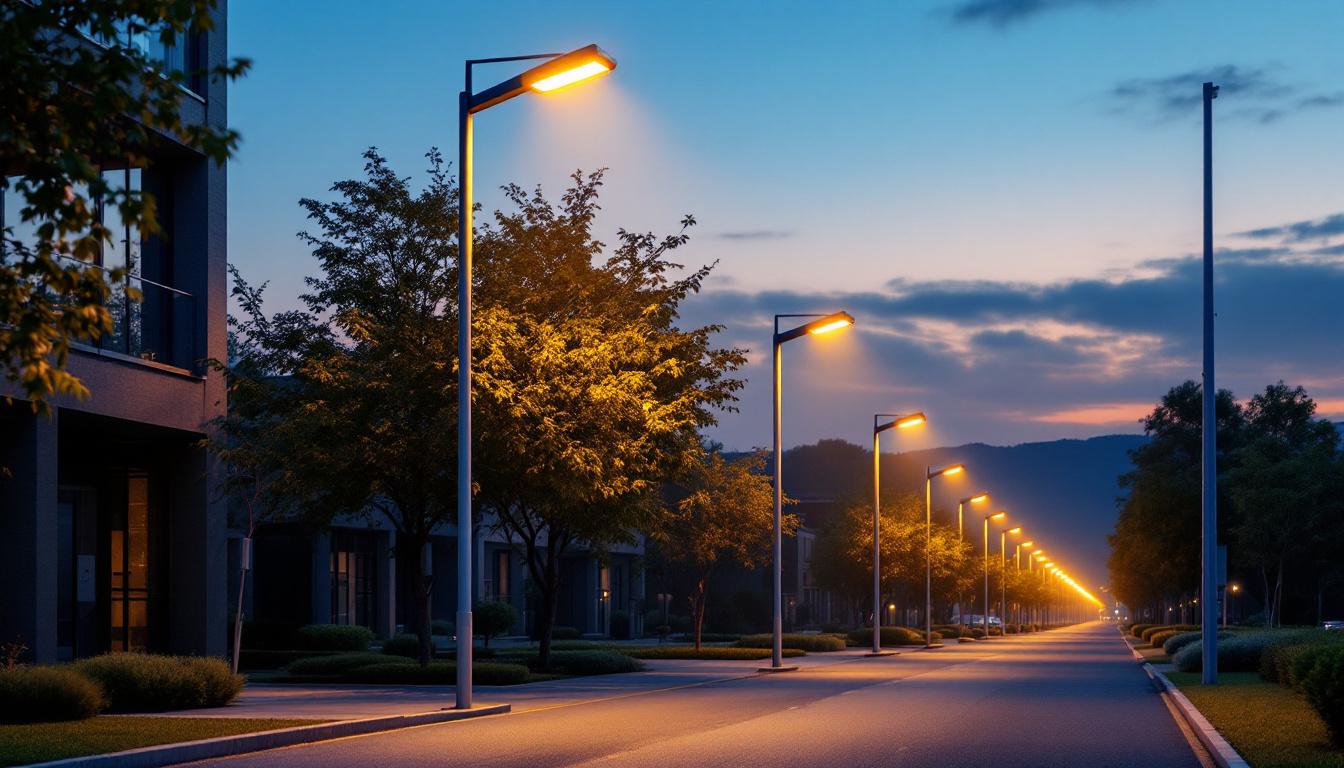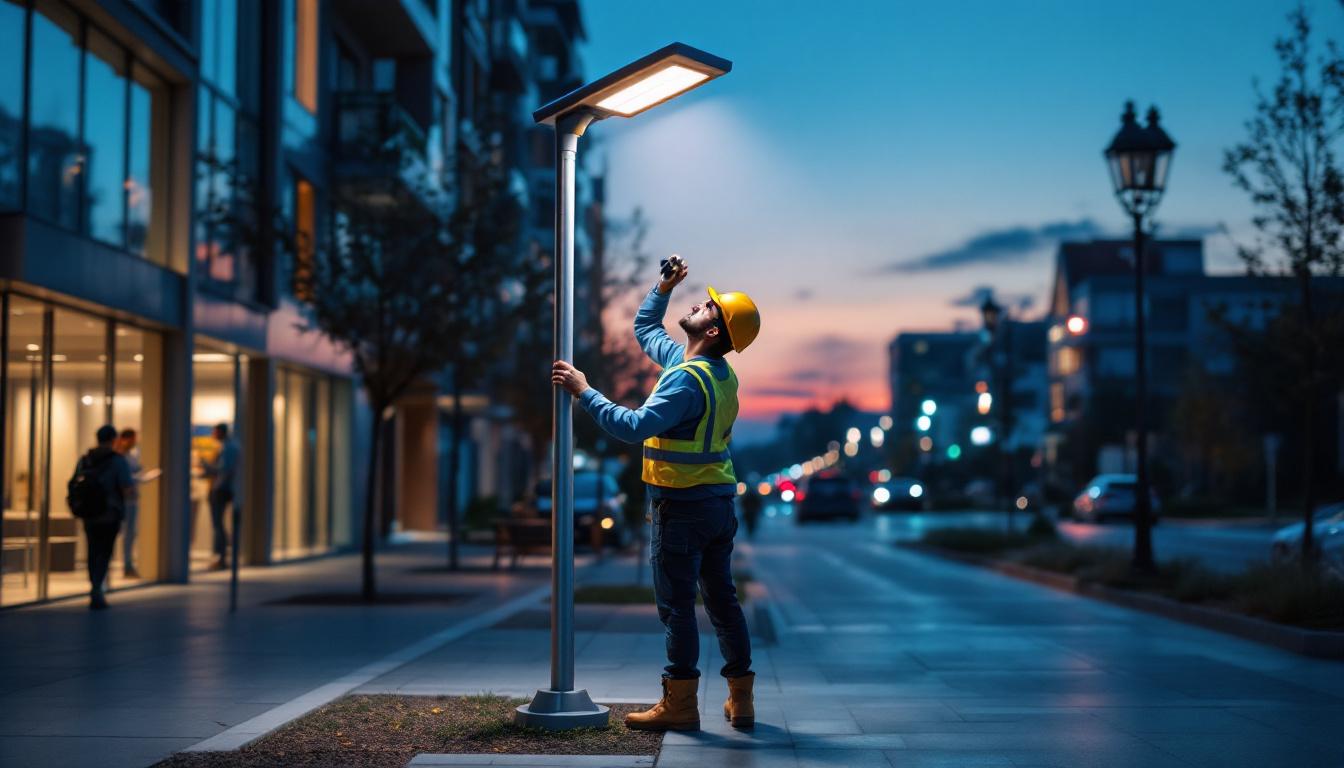
Outdoor lighting plays a crucial role in enhancing safety, security, and aesthetics in various environments, from residential neighborhoods to commercial properties. The choice of light poles and their configuration can significantly influence the effectiveness and efficiency of outdoor lighting systems. This article delves into strategies for optimizing light poles to achieve maximum efficiency in lighting, catering specifically to lighting contractors seeking to enhance their projects.
Light poles serve as the foundation for outdoor lighting systems. They not only support the luminaires but also determine the distribution of light across a given area. The right selection and placement of light poles can enhance visibility, reduce energy consumption, and minimize light pollution. Properly designed lighting systems can significantly impact safety and security in public spaces, deterring crime and accidents by ensuring that all areas are well-lit and easily navigable during nighttime hours.
In addition to functionality, light poles contribute to the overall aesthetic of a space. Choosing designs that complement the surrounding architecture or landscape can elevate the visual appeal of an area, making it more inviting and safer for pedestrians and vehicles alike. Decorative light poles, for instance, can serve as landmarks, enhancing the identity of neighborhoods or commercial districts. By integrating artistic elements into the design, municipalities can create a cohesive look that reflects the character of the community while also fulfilling practical lighting needs.
There are various types of light poles available, each designed for specific applications. Common materials include aluminum, steel, and fiberglass, each offering unique benefits. Aluminum poles are lightweight and resistant to corrosion, making them ideal for coastal areas. Steel poles provide durability and strength, suitable for high-traffic zones, while fiberglass poles offer a non-conductive option that can be beneficial in certain environments. Additionally, the choice of material can affect the longevity and maintenance requirements of the poles, with some materials requiring more frequent inspections and upkeep than others.
Moreover, the height of the poles is a critical factor. Taller poles can illuminate larger areas but may require more powerful fixtures, while shorter poles are often used in residential settings where lower light levels are sufficient. Understanding the specific needs of a project will guide the selection of the appropriate type and height of light poles. Furthermore, the integration of smart technology into light poles, such as sensors and LED fixtures, can enhance energy efficiency and allow for adaptive lighting solutions that respond to real-time conditions, further optimizing performance and sustainability.
The placement and spacing of light poles are vital for achieving optimal lighting efficiency. A common mistake is to install poles too far apart, leading to dark spots that can compromise safety. Conversely, poles that are too close together may create excessive brightness or glare, detracting from the overall effectiveness of the lighting. Factors such as the surrounding environment, including trees, buildings, and other obstructions, must also be taken into account to ensure that light distribution is even and effective.
To determine the ideal spacing, contractors should consider the type of fixtures being used, the desired illumination levels, and the specific application. Utilizing lighting design software can aid in visualizing the layout and ensuring that the spacing meets the required standards for safety and visibility. Additionally, consulting with lighting designers or engineers can provide valuable insights into best practices and innovative solutions that enhance functionality while adhering to local regulations and standards. This collaborative approach can lead to a more comprehensive lighting strategy that addresses both aesthetic and practical considerations, ultimately resulting in a well-lit and welcoming environment for all users.
The choice of lighting technology significantly impacts energy efficiency and performance. Traditional incandescent and halogen bulbs are being replaced by more energy-efficient options such as LED and induction lighting. These modern technologies not only consume less energy but also have longer lifespans, reducing maintenance costs.
LED lights, in particular, have gained popularity due to their versatility and efficiency. They offer a range of color temperatures, allowing for customizable lighting solutions that can enhance the ambiance of outdoor spaces. Additionally, LEDs produce less heat, which can be beneficial in maintaining the longevity of the fixtures.
Adhering to energy efficiency standards is essential for lighting contractors. Many regions have implemented regulations that dictate the minimum efficiency ratings for outdoor lighting systems. Understanding these standards is crucial for compliance and can also provide opportunities for incentives or rebates.
Contractors should stay informed about the latest energy codes and guidelines, as these can influence the selection of fixtures and the overall design of lighting systems. By prioritizing energy-efficient solutions, contractors can not only reduce operational costs for clients but also contribute to sustainability efforts.
Integrating smart lighting solutions into outdoor lighting systems can significantly enhance efficiency. Smart technology allows for remote monitoring and control of lighting fixtures, enabling adjustments based on real-time data such as occupancy levels and ambient light conditions.
For example, motion sensors can be employed to activate lights only when needed, reducing energy consumption during off-peak hours. Additionally, dimming capabilities can be utilized to adjust light levels based on the time of day or specific events, further optimizing energy use.
While functionality is paramount, the aesthetic appeal of light poles should not be overlooked. A well-designed lighting scheme can enhance the beauty of outdoor spaces, making them more inviting and enjoyable for users. Contractors should consider the architectural style of the surrounding buildings and the overall landscape when selecting light pole designs.
Incorporating decorative elements into light pole designs can also add character to a space. For instance, ornamental poles can be used in parks or plazas to create a more charming atmosphere, while sleek, modern designs may be more suitable for urban environments.
The color temperature of outdoor lighting plays a significant role in how spaces are perceived. Warmer color temperatures (around 2700K to 3000K) create a cozy and inviting atmosphere, making them ideal for residential areas and parks. In contrast, cooler temperatures (4000K to 5000K) provide a more clinical and alert environment, suitable for commercial and industrial applications.
Additionally, the quality of light, including factors such as color rendering index (CRI), should be considered. A higher CRI indicates that colors will appear more vibrant and true to life, enhancing the overall experience in outdoor spaces.
As awareness of environmental issues grows, lighting contractors must consider the ecological impact of their projects. Selecting materials and technologies that minimize environmental harm is essential. For instance, using recyclable materials for light poles and fixtures can reduce waste and promote sustainability.
Furthermore, designing lighting systems that limit light pollution is crucial. This can be achieved through the use of shielded fixtures that direct light downward, minimizing glare and preserving the natural night sky. By prioritizing environmentally friendly practices, contractors can contribute to the well-being of the community and the planet.
Regular maintenance is essential for ensuring the longevity and efficiency of outdoor lighting systems. Contractors should establish a maintenance schedule that includes inspections, cleaning, and repairs as needed. This proactive approach can prevent costly replacements and ensure that lighting systems continue to function optimally.
Particular attention should be given to the condition of the poles themselves. Corrosion, rust, and physical damage can compromise the structural integrity of light poles, necessitating timely repairs or replacements. Additionally, keeping the fixtures clean and free of debris will enhance their performance and light output.
Seasonal changes can impact the performance of outdoor lighting systems. In areas with harsh winters, snow and ice can accumulate on poles and fixtures, affecting their functionality. Contractors should consider the local climate when designing lighting systems, ensuring that materials and designs can withstand environmental challenges.
In warmer climates, UV exposure can lead to fading and degradation of materials over time. Using UV-resistant coatings can help protect light poles and fixtures, extending their lifespan and maintaining their appearance. By anticipating seasonal challenges, contractors can design more resilient lighting systems.
Engaging with the community can provide valuable insights into the effectiveness of outdoor lighting systems. Gathering feedback from residents and users can help identify areas for improvement and inform future projects. Conducting surveys or community meetings can foster collaboration and ensure that lighting solutions meet the needs of those who utilize the spaces.
Moreover, involving the community in the design process can enhance the sense of ownership and pride in public spaces. This collaborative approach can lead to more successful lighting projects that are well-received and appreciated by the community.
Optimizing light poles for maximum efficiency in outdoor lighting is a multifaceted endeavor that requires careful consideration of various factors, from the selection of materials and technologies to the design and maintenance of lighting systems. By prioritizing energy efficiency, aesthetics, and community engagement, lighting contractors can create effective and sustainable outdoor lighting solutions.
As the demand for innovative and environmentally friendly lighting solutions continues to grow, staying informed about industry trends and best practices will be essential for contractors. Embracing these strategies not only enhances the quality of lighting projects but also contributes to the overall safety and enjoyment of outdoor spaces.
Ready to elevate your lighting projects with the efficiency and style they deserve? Look no further than LumenWholesale for all your outdoor lighting needs. Our spec-grade lighting products are designed to meet the highest industry standards, ensuring that every installation shines with reliability and performance. With unbeatable wholesale prices and the convenience of free shipping on bulk orders, you can trust LumenWholesale to provide premium lighting solutions that are as affordable as they are exceptional. Don’t let middleman markups dim your vision. Take the next step towards brighter, more sustainable outdoor spaces by visiting Wholesale Lighting at the Best Value today.

Discover how a simple blinking light bulb can illuminate new business opportunities for lighting contractors.

Discover how Bulb Cellars is revolutionizing the bidding process for lighting contractors.

Discover the essential insights lighting contractors need to meet client expectations when dealing with LED fluorescent tubes.

Discover how solar lamp posts are revolutionizing the lighting industry by enhancing efficiency for contractors.